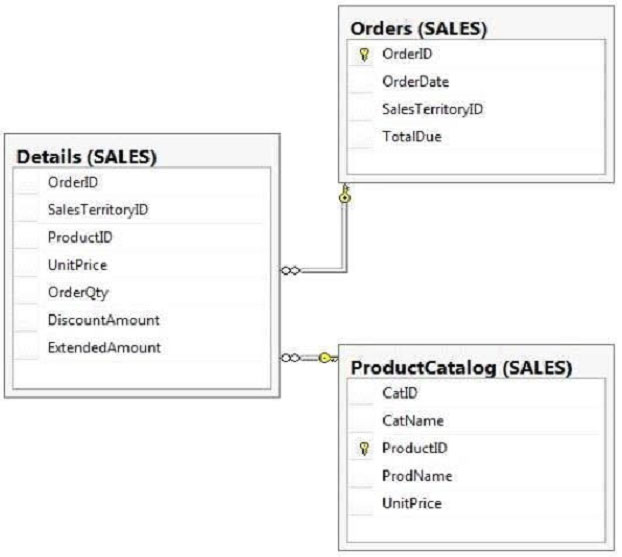SIMULATION -
You have a database that contains the tables as shown in the exhibit. (Click the Exhibit button.)

You need to create a query that returns a list of products from Sales.ProductCatalog. The solution must meet the following requirements:
UnitPrice must be returned in descending order.

✑ The query must use two-part names to reference the table.
✑ The query must use the RANK function to calculate the results.
✑ The query must return the ranking of rows in a column named PriceRank.
✑ The list must display the columns in the order that they are defined in the table.
✑ PriceRank must appear last.
To answer, type the correct code in the answer area.
Part of the correct T-SQL statement has been provided in the answer area. Provide the complete code.



